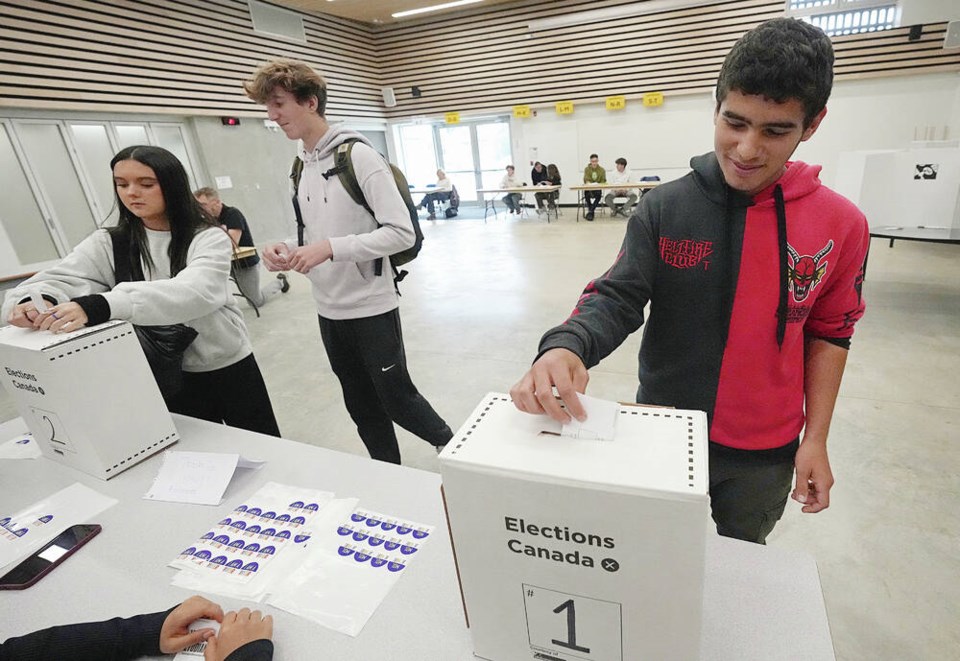It might not be a vote that counts in the traditional sense, but students who participated in the Student Vote program before election day say they were happy to have a say in the process anyway.
Victoria High School student Hussein Obid, one of the students from Brian Bradley’s Political Studies 12 class collecting ballots for the program last week, said he’s a fan.
“It’s a good thing,” the 16-year-old said. “It’s to show other people what the students think.”
Vic High is among dozens of secondary, middle and elementary schools around the Island and more than 1,000 throughout B.C. that took part in Student Vote.
More than 170,000 students from Grade 4-12 voted, and the results were an almost even split between the NDP and Conservatives: 36.7 per cent supported the NDP while 36.2 per cent backed the Conservatives. As for the Green Party, it drew 19.2 per cent of the student vote.
All three leaders were elected by the students — the NDP’s David Eby in Vancouver-Point Grey, the Conservatives’ John Rustad in Nechako Lakes and the Greens’ Sonia Furstenau in Victoria-Beacon Hill.
In 2020, 700 B.C. schools took part in Student Vote and gave the NDP under John Horgan about 40 per cent of the vote, with Furstenau and the Greens taking 27.6 per cent and Andrew Wilkinson’s Liberals taking 25.5 per cent.
Hussein said he voted for the NDP because of its stances on affordable housing and health care.
Henrique Porto, also 16, liked having a chance to be part of the voting process, as well.
“It’s so different than just seeing what you see on TV,” he said. “I’m interested because each time you see more polarized politicians against each other.”
Bradley said that being involved with Student Vote “fits perfectly with this class,” since it helps to inform students about how voting works
“This is the rehearsal, this is the practice, and next time when they actually go to vote, things are demystified,” he said.
Bradley said that when Vic High took part in Student Vote in the last provincial election, it was the only school in the Victoria-Beacon Hill riding that chose the winner of the real vote, the NDP’s Grace Lore.
The other schools went for the Green Party, Bradley said.
“We’re the bellwether,” he said with a smile.
Student votes were cast in all 93 electoral districts in the province through the Toronto-based initiative.
Part of the impetus for Student Vote is the overall drop in voting rates in the past three or four decades, said Dan Allan, chief program officer for Student Vote, which began in 2003.
He said the idea is to engage youth before they’re 18, the minimum voting age for both federal and provincial elections.
The unknown elements of voting can be “one of the big hurdles why young people don’t vote,” he said.
B.C.’s first experience with Student Vote in a provincial election was in 2005. It was also used in municipal elections in 2018 and 2022.
Student Vote is run by CIVIX, a non-partisan charity aimed at providing school-aged youth with education in civic issues.



